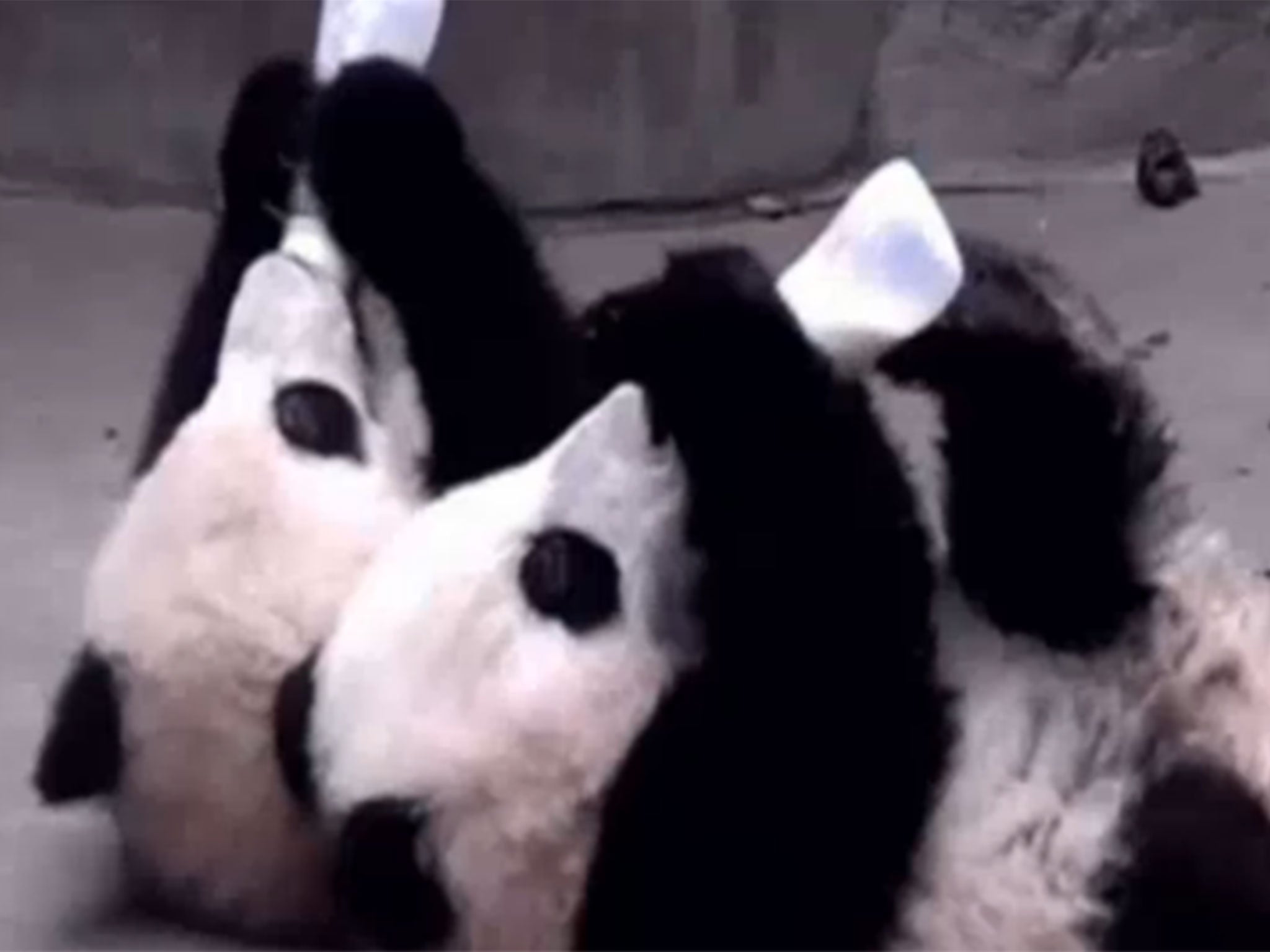Giant pandas are sociable, scientists find after tracking group for two years
New data will go some way to dispelling notions of the incredibly rare animals being solitary

Your support helps us to tell the story
From reproductive rights to climate change to Big Tech, The Independent is on the ground when the story is developing. Whether it's investigating the financials of Elon Musk's pro-Trump PAC or producing our latest documentary, 'The A Word', which shines a light on the American women fighting for reproductive rights, we know how important it is to parse out the facts from the messaging.
At such a critical moment in US history, we need reporters on the ground. Your donation allows us to keep sending journalists to speak to both sides of the story.
The Independent is trusted by Americans across the entire political spectrum. And unlike many other quality news outlets, we choose not to lock Americans out of our reporting and analysis with paywalls. We believe quality journalism should be available to everyone, paid for by those who can afford it.
Your support makes all the difference.They might have a reputation as solitary creatures but it turns out pandas are more sociable than previously thought.
US scientists were able to track the movements of a group of pandas over two years in ground-breaking research to discover more about these incredibly rare animals.
Researchers from Michigan State University were granted rare permission to attach GPS collars, which transmitted every four hours, to five giant pandas in the Wolong National Nature Reserve in China.

The Chinese government, hugely protective of the animals, has previously banned GPS tracking on the rare animals.
Pan Pan, Mei Mei and Zhong Zhong, a young female Long Long and a male dubbed Chuan Chuan were collared and tracked from 2010 to 2012.
It is the first time researchers have been able to examine the animals’ movements over a significant period of time using technology – and the results were surprising.
After investigating the data, the scientists found that three pandas - Chuan Chuan, Mei Mei and Long Long – would gather in the same part of the jungle for significant portions of time.
“This might be evidence that pandas are not as solitary as once widely believed,” Jindong Zhang, a co-author of the study, told the Mail Online.
The pandas would gather in spring, outside of the autumnal mating season, suggesting their behaviour was not part of the mating efforts.
"Sometimes the pandas were within 10 or 20 metres of each other, which suggests the pandas were in direct interaction," Vanessa Hull, a research associate at MSU's Center for Systems Integration and Sustainability (CSIS), told the New Scientist.
The length of time the pandas spent together – often several weeks – also suggested to the researchers that the data gathered by the collars was not an anomaly.

“We can see it clearly wasn't just a fluke, we could see they were in the same locations, which we never would have expected for that length of time and at that time of year,” Ms Hull added.
Other information garnered from the project showed that the male panda (Chuan Chuan) wandered further afield than any of the females, leading scientists to speculate that he was ‘checking in’ on the female animals and advertising his territory ahead of mating season.
On average the pandas covered an area of approximately two square miles – but the project revealed that Chuan Chuan covered three square miles.
Other information also revealed (perhaps unsurprisingly) that the majority of a panda’s day (up to 14 hours) was spent eating and sleeping. Pandas gain only small amounts of nutrients from bamboo, hence the length of time they need to devote to eating.

“They pretty much sit down and eat their way out of an area,” explained Ms Hull. She added that their data also showed that pandas’ remembered ‘tasty’ meals and would repeatedly return to specific locations to eat.
The collars, which weighed roughly 2.6 pounds, were designed to fall off after two years.
A recent report released by the Chinese government showed that wild panda numbers had increased by nearly 17 per cent to 1,864.
Join our commenting forum
Join thought-provoking conversations, follow other Independent readers and see their replies
Comments